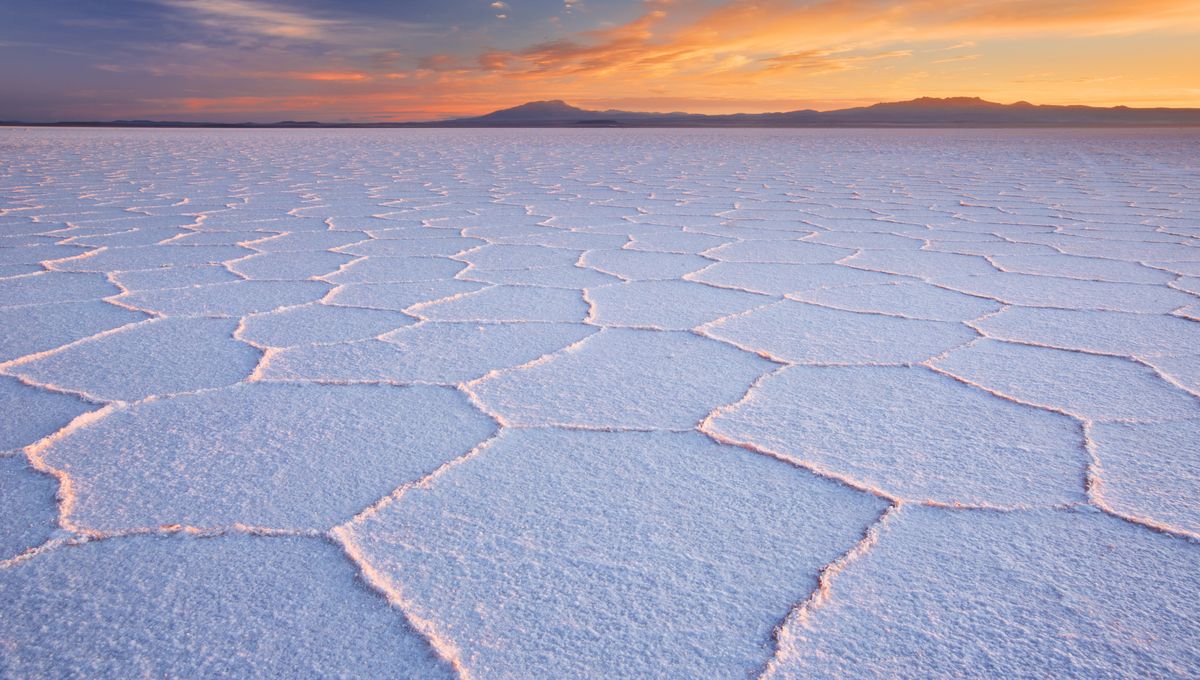
This article first appeared in Issue 19 of our digital magazine CURIOUS.
A photographic playground of a salt flat can be found sprawling across southwest Bolivia. Here, the remains of an ancient lake have created a salty crust that makes for great perspective games in the dry season – and turns into a massive mirror when wet.
The world’s largest salt flat is transformed when overflowing lakes nearby flood its surface with a thin layer of water. Salar de Uyuni, as the salt flat (or playa) is known, is completely level and stretches for about 10,582 square kilometers (4,086 square miles), making its reflective surface roughly the same size as the “Big Island” of Hawai’i.
From space, it can be observed as the largest of two neighboring salt flats – the second being Salar de Coipasa, which sits to the northwest. The two landscapes appear otherworldly in photos, but they’re largely made up of something you’ll find on most dinner tables.
Salar de Uyuni is a sprawling desert of halite – which is your common table salt – and gypsum, which is what some of the biggest crystals on the planet are made of. Its salty surface is often marked with a peculiar honeycomb pattern, which got scientists scratching their heads. Why are the patterns so geometrically perfect? And why are the tiles so large – always between 1 and 2 meters (3 and 6 feet)?
In 2023, a team of researchers finally worked it out.
“In salt deserts, the first thing you see – almost the only thing you see – is an endless patchwork of hexagons and other ordered shapes,” said study author Dr Lucas Goehring, Associate Professor in Physics at Nottingham Trent University’s School of Science and Technology in a statement.
“What we’ve shown is that a simple, plausible explanation is there, but hidden beneath the ground. The surface patterns reflect the slow overturning of salty water within the soil, a phenomenon somewhat like the convection cells that form in a thin layer of simmering water.”
Salar de Uyuni sits in the place of the large and ancient Lake Minchin that covered the plateau thousands of years ago. According to NASA Earth Observatory, it shrunk significantly around 15,000 years ago, creating an ever-shrinking briny pool that eventually evaporated, leaving in its wake the vast deposit of halite and gypsum.
The salty crust that attracts millions of tourists each year can be as thick as 10 meters (33 feet) in some places and creates a featureless backdrop that allows photographers to play around with perspective. During the short rainy season (usually December to April), the flat only receives a few inches of rain annually – but with nowhere to go, it sits atop the salt, creating a breathtaking mirror image of the sky above.
How to get there: Salar de Uyuni sits in the Daniel Campos Province in Potosí in southwest Bolivia and is less than a 10-minute drive from Uyuni airport.
CURIOUS magazine is a digital magazine from IFLScience featuring interviews, experts, deep dives, fun facts, news, book excerpts, and much more. Issue 22 is out now.
Source Link: The World’s Largest Salt Flat Is Full Of Mysterious Patterns